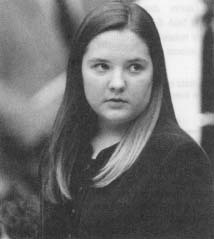Louise Woodward Trial: 1997
Family Warning
In late January 1997, the Eappens had issued an ultimatum to Louise: shape up or ship out. Just five days later, Matthew was in the hospital.
"We are not saying … that the defendant woke up on February 4 specifically intending to kill Matthew Eappen," Leone told the jury. "What we're saying … is that on February 4, the defendant, in a frustrated, resentful, unhappy attitude, slammed the baby into a hard object and shook him, causing his death—actions that anyone would know would result in death. In this commonwealth, that is murder."
An early prosecution witness, Dr. Kenneth Mandl, who had treated Matthew in the emergency room, described the infant as unresponsive and comatose, with enlarged pupils and evidence of retinal hemorrhaging—all signs of severe head trauma.
Under vigorous cross-examination from celebrated attorney Barry Scheck, however, Mandl conceded that he had found no physical evidence to suggest that Matthew had been shaken. Scheck pressed hard. Was there anything to support the prosecution's claim that Matthew's head had been slammed down "with the force of dropping a child 15 feet onto hard concrete"? Again Mandl had to concede. "There were no findings to specifically indicate that, no."
 Nanny Louise Woodward on trial in the death of eight-month-old Matthew left in her charge.
Nanny Louise Woodward on trial in the death of eight-month-old Matthew left in her charge.
Dr. Joseph Madsen, who had operated on Matthew, said the injuries had caused the brain to swell "like a loaf of bread rising in an oven," and he rebuffed Scheck's suggestion—which would form the cornerstone of the defense—that the brain trauma was the result of a previous head injury.
Additional topics
Law Library - American Law and Legal InformationNotable Trials and Court Cases - 1995 to PresentLouise Woodward Trial: 1997 - Family Warning, Deadly Fall?, Defendant Stays Cool, Prosecution Switch